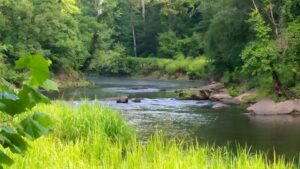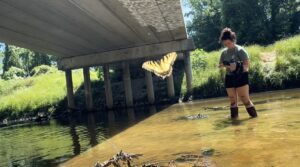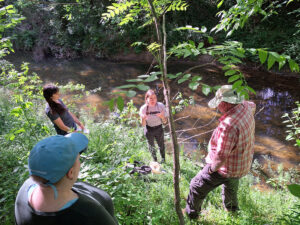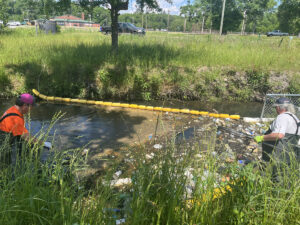News

In today’s meeting of the NC Environmental Management Commission, the Water Quality Committee restored important scientific information to two reports on riparian buffers and Solar Bees in Jordan Lake.
On Monday, our Upper Neuse Riverkeeper and the NC Sierra Club sent  a letter to the NC Environmental Management Commission urging them to restore important language to a state report on riparian buffers. As previously reported in the News and Observer, the McCrory appointed administration at the NC Department of Environmental Quality (NC DEQ) edited reports to remove scientific based fact and, in this instance, downplay the importance of protecting riparian buffers.
a letter to the NC Environmental Management Commission urging them to restore important language to a state report on riparian buffers. As previously reported in the News and Observer, the McCrory appointed administration at the NC Department of Environmental Quality (NC DEQ) edited reports to remove scientific based fact and, in this instance, downplay the importance of protecting riparian buffers.
Today, the Water Quality Committee voted to reject DEQ’s rewritten version of the riparian buffer report, and instead submit to the NC General Assembly an earlier March 10 version, which includes important information on the benefits of riparian buffers. The Committee also added language to emphasize the importance of protecting tree-lined buffers along both perennial and intermittent streams. Intermittent streams, are waterways that have water in them only part of the year, but are critical for the protection of clean water downstream.
In addition, the Committee also rejected DEQ’s rewritten version of the in-lake treatment report (i.e. Solar Bees), and instead will submit to the NC General Assembly the earlier March 1 version, which notes that Solar Bees, or “in-lake treatment” doesn’t work, and that pollution needs to be controlled at the source.
More Information
Currently, our most polluted waterways employ buffers as a primary tool to reduce nutrient pollution. Generally, buffers of 50 feet are required on these stressed waterways. Buffers help to take up nutrient pollution, stabilize streambanks, regulate water temperature and provide habitat for aquatic species.
Requiring undisturbed vegetation close to a waterway is the best way to reduce pollution
flowing into the water and prevent erosion. Buffers that contain a mix of trees, shrubs and
grasses are more effective at capturing a wide range of pollutants than a riparian buffer that is
solely trees or grass. Trees have root systems that trap and uptake nutrients, stabilize banks, and
regulate the flow of water. Further, trees shade the river and provide an input of leaf litter and
branches that are necessary for many aquatic species.
The editing of technical staff reports by the administration of NC DEQ appears to be politically motivated in order to support the further weakening of clean water laws. The edited report mis-characterizes the true purpose of existing buffer rules and downplays the importance that buffers play in protecting clean water.
Read the letter to the EMC Here
Technical Staff Buffer Report: March 10, 2016
Related News

Sound Rivers makes waves at fly fishing film festival
May 2nd 2024

Sound Rivers investigates Swift Creek hog waste spill
May 2nd 2024

Maya Appreciation Day Paddle
May 2nd 2024

Riverkeeper, association partner for Ellerbe Creek monitoring
May 2nd 2024

Adkin Branch relieved of 70 lbs of trash
May 2nd 2024

Riverkeeper weighs in on Raleigh tap-water woes
April 25th 2024

Small cleanup, with a big impact
April 25th 2024

New math moves parts of the Pamlico off impaired waters list
April 25th 2024

